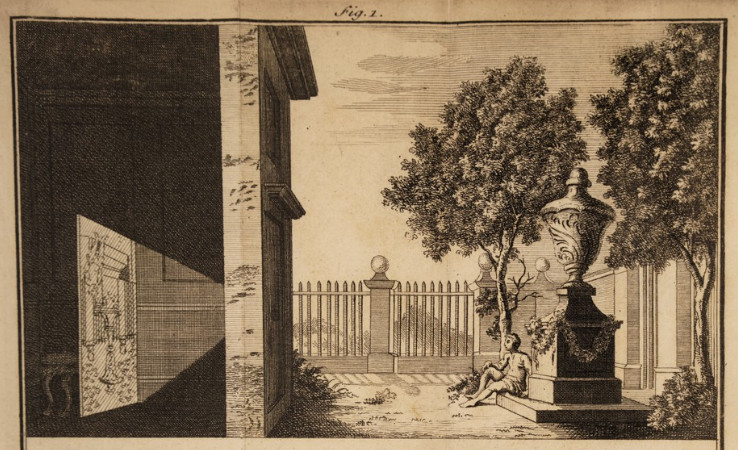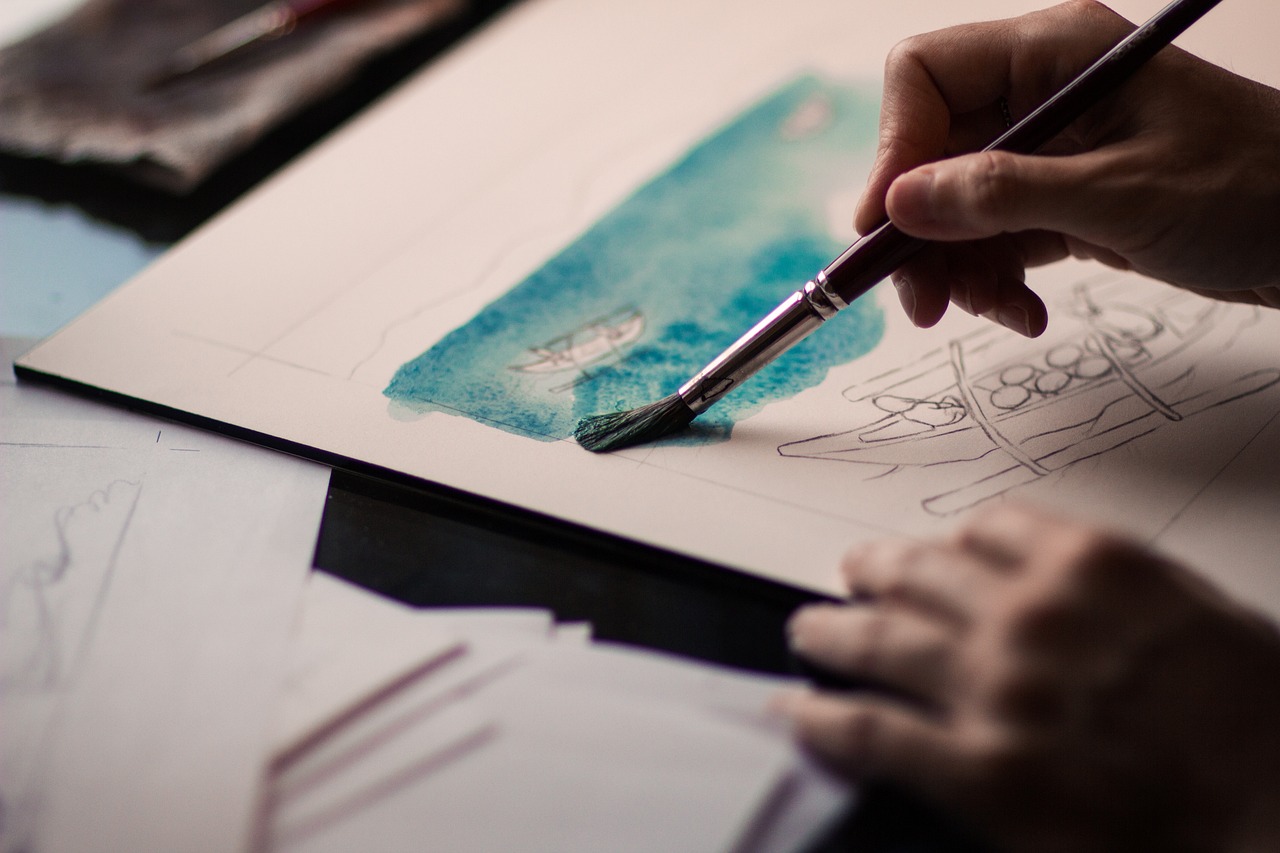YOU CAN MAKE ANYTHING
Here’s a secret…you can make anything. This post is meant to pump you up. I don’t have a secret to making art success or a pdf download. This is just for people who want to learn to make art. You can learn to make anything you want at any time. It sounds strange or like I’m trying to convince you to buy fake gold, but that’s the truth.
There’s a moment in my life when I was first working and living on my own in Chicago when I was just sitting in my apartment wondering what to do. I had just visited the art museum and I was thinking about how great everything there really was and how unfair it was that I couldn’t be an artist. Then I wondered… what was stopping me? That’s when I literally heard that glass plate shattering sound in my head. Instead of just looking at pretty paintings and wishing I could be an artist…why not go buy some paint and try and do it?
WHAT? No! You can’t!
That’s what the internal voices said when I had that thought. Even as I walked the ten minutes from my apartment to Michaels. Even when I bought the super beginner acrylic painting kit and some very small canvases. Even when I purchased them for a surprisingly small cash value.
NO. You can’t! No.
I walked home, opened up the kit and began making mistake after mistake.
(Before you read more, think about it for a second. What’s stopping you from being an artist? Write it down before you keep reading)
Mistake After Mistake After Mistake…
Mistakes are part of the process, that’s so critical to understand. Heck, they ARE the process. But we often think of mistakes a proof that we’re not good enough. When we make mistakes, we feel like we cannot do something “right”. But that’s not the case with art. Mistakes are normal and actually if you ask any artist they’ll tell you that sometimes mistakes end up being the best part of a work of art.
Why do we hate mistakes? There’s so much “perfectly crafted” media around us we’re not exposed to them. The “curated lifestyle” and “curated art” pages don’t show the mistakes. For every “perfectly crafted” object that you see in your daily life, there were hundreds if not thousands of drafts and revisions to reach that “perfection”. Everything you look at in advertising, magazines, books, art, design, engineering, etc…everything was made through a process of trial and error. And chances are, if you’re looking at something in public, it was made by someone at the top of their career. Which means it took 25+ years of creating rejects and drafts every day for that object to reach you. That’s a lot of mistakes.
So when you finally start to make something for the first time, you should know going in that it’s going to suck. It will suck. It’s your first time trying something new. That irritating voice inside is going to say-
What Did I Tell YOU?! You Can’t Do It.
If you’re not ready for that voice, it’s all over. You failed. You suck. That’s it. All done. Stop reading. Goodnight. Go back to watching television.
But if you’re prepared to fail, there’s some magic that will happen. You will try again. And again. And again. Some people call this failing upwards.
It sounds so simple, but I think this is the hardest part of starting any endeavor. Everything I’ve ever tried to create has sucked the first time I tried it. Nothing came out perfect the first time.
We often think of artists in visual art, music, etc as having been “prodigies.” These gifted individuals are revered as individuals who take to their craft like “ducks take to water.” But when you really look at how prodigies become “prodigies”, you realize that it’s a lot more like a duck in the water. Everything on the surface looks pristine, elegant and natural, but beneath the surface there’s this churning chaos and struggle to stay afloat every second. Prodigies practice constantly, they obsess over whatever they are talented at. They often burn out from their hyper-focus and obsession. They can practice as much in 5-7 years as a regular “hobbyist” type of person would practice in 10 or more years. So if you’re worried that you’re not talented or not gifted at something, because it didn’t come naturally to you the first time, wait until you’ve worked on it for 10,000 hours and check back in.
“I Can’t Draw”
Many times we tell ourselves we can’t do it. Even before we start and make mistakes, we can talk ourselves out of even trying to make art. For example, I’ll use drawing, but know that this applies to any kind of art:
I hear the same thing all the time, “I can’t draw” or “I’m bad at drawing”.
If you wrote down what was stopping you from being an artist, was this one it?
When I was picking up my son at daycare the other day, I noticed that the class had drawn pictures using crayons. All the two year old’s in the class had a picture and it was hung up on the wall. Let me tell you something very important: NONE OF THE PICTURES WERE GOOD!
We do not take to art as ducks take to water. Things don’t just instinctually kick in when we’re handed a pencil and paper. Nobody just picks up any type of artistic talent. It takes work to learn to make art. I used to say I could not draw and I was bad at drawing all the time. I’m still not an expert at drawing, but at this point I have learned enough of the concepts of how to create a drawing that I understand how I should try to draw. Just because you haven’t ever heard the concepts or techniques that artists use to draw, doesn’t mean you can’t draw!
DID YOU KNOW ARTIST’S USE REFERENCES?
Sure.
DID YOU KNOW THOSE REFERENCES ARE PROJECTED ONTO THE CANVAS SO THAT THEY CAN TRACE THE FEATURES DIRECTLY AND THEREBY CREATE SOMETHING VERY CLOSE TO OR ALMOST IDENTICAL TO THE SUBJECT MATTER?
Um?…
DID YOU KNOW THAT THIS HAS BEEN GOING ON SINCE POSSIBLY DIVINCI?
It’s true. This example is what changed my mind about my own drawing skills. The Dutch painter Johannes Vermeer (known for Girl with the Pearl Earring) used the mechanical trick of the camera obscura. Some art historians think the use of camera obscura goes back even further.

A small hole with light shining on it would project an image onto the reverse surface upside-down. Those amazing life-like paintings that you assumed must take some amazing drawing skills were created partly using tracing.
Does that make drawing seem easier? There’s nothing easy about it still, even when you can use a projector or a lightbox, you must have hand-control, the correct materials to draw with, the correct materials to draw on, and understanding of what to trace, and eventually a mastery of how to use the photo as a true “reference” and use your own strokes and ideas to craft an image. That all comes with experience and practice. The fact remains…you can draw. Anyone can draw if they have the ability to trace a reference.
The misconception/misinformation that you cannot draw if you cannot do it from memory or by looking at an object has been proven false here. The same applies to any artform. There’s tricks and tips to the process that you’re not aware of that artists use. Once they know what it is, they call it a “secret”. They say “oh that’s the secret to making art”. But to the rest of us it’s a barrier.
Building a Toolbox
Once you push past the fear of making a mistake and the idea that you cannot do it, you’ll still be a beginner.
Art isn’t a defined path.
There’s a lot of overlap between art forms. Once you start trying one thing, for example acrylic painting, you’ll be able to try the next thing. Some things you learn will translate. Your vision of form, shape, color will continue to be helpful. Your references and inspirations will stay the same. You don’t have to continue making just one kind of art. In fact, it’s best to try everything. Once you have the ability to break through negative thinking and the fear of mistakes, exploration becomes fun and can inspire new ideas. Every technique you pick up can go in your toolbox.
Your toolbox will help you build confidence that you can make anything. Your toolbox will be things like:
- Your stamina and physical dexterity using art tools
- Your knowledge of color theory and art history, which you will build slowly as you start
- Your ability to handle paper and other materials precisely, a skill that will take mental focus. (this step is where most of my beginner mistakes come from)
- Your workspace
- Your art teachers and favorite art demo websites
These things will be specific to you, but the more you add to the toolbox, the more you’re going to feel confident making art.
You Can Make Anything
The best part of this process, is that it is cyclical. An infinite loop of growth. The more you believe in yourself to push through your inner critics and resistance and try to learn to make art, the more you’re going to be able to jump into the next problem. You can make anything. You just have to take the first step.
What did you write down at the beginning? What’s stopping you from learning to make art? If I haven’t covered it, please let me know in the comments.
